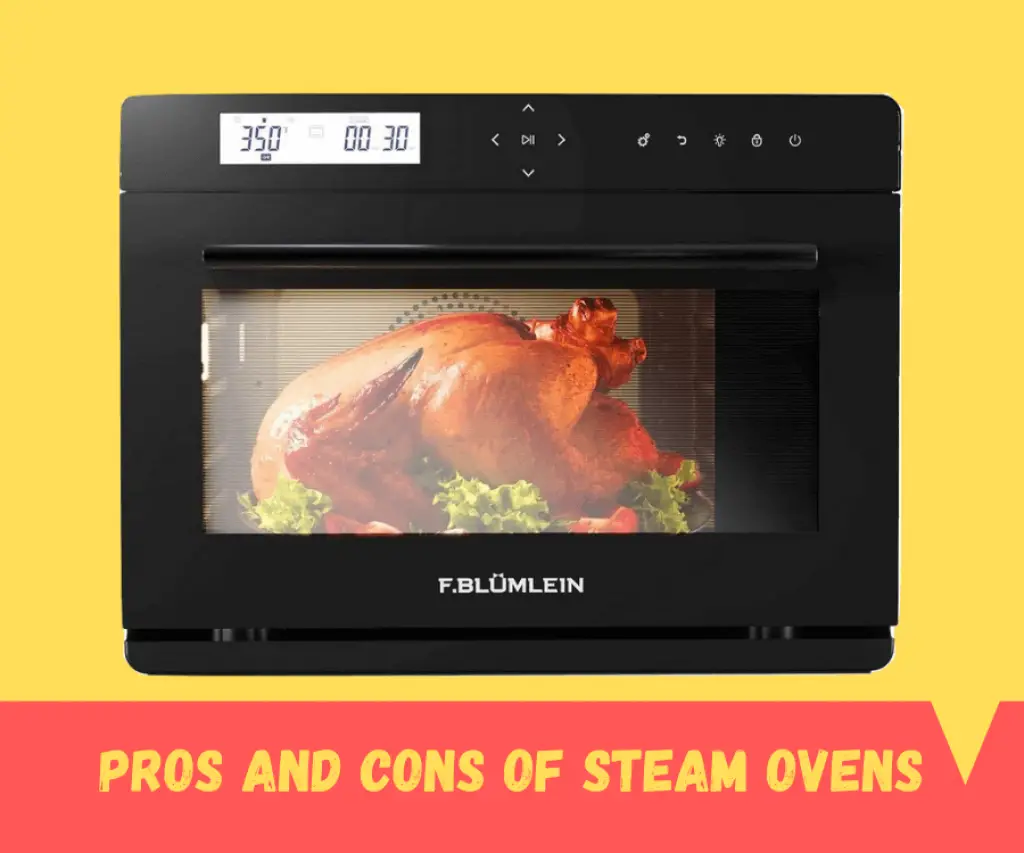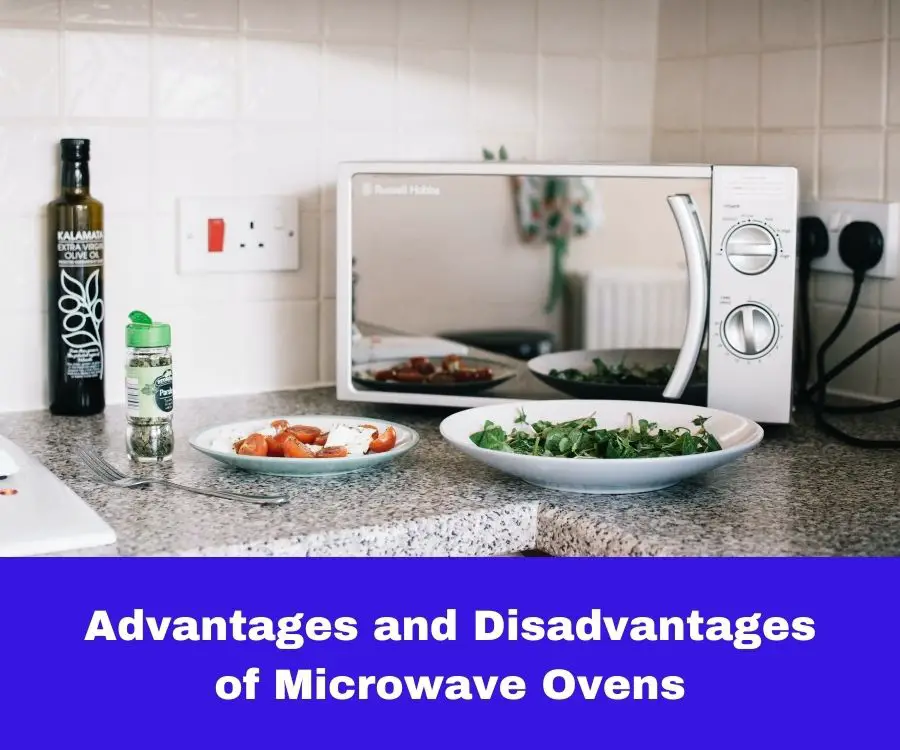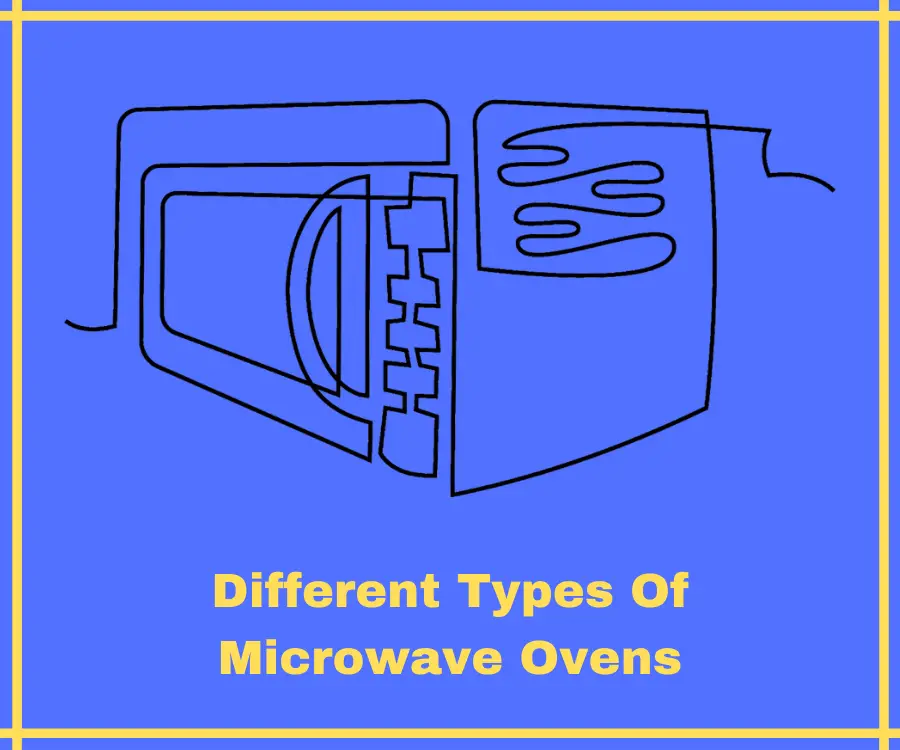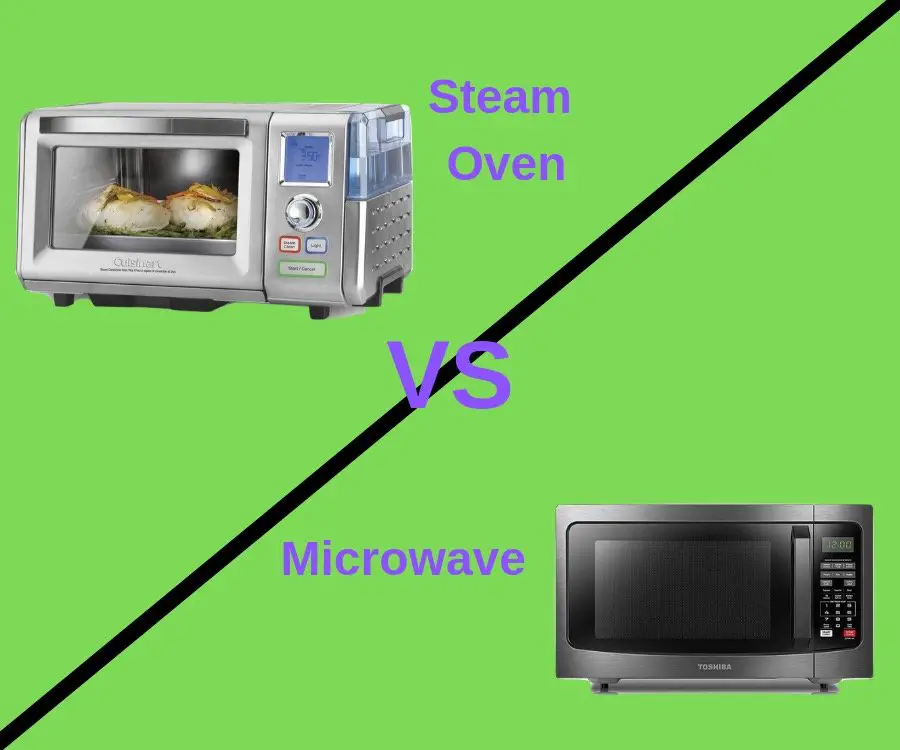I’ve been wanting to invest in a steam oven for a while now, and didn’t really know where to start. I began by looking at the pros and cons of steam ovens. If you are anything like me, you will want to know the advantages and disadvantages of something as expensive as a steam oven before making the investment.
I’ve researched this in a fair amount of detail before buying my own, and below is a helpful summary for anyone else looking into this.
So what are the pros and cons of steam ovens? Steam ovens cook food that is very healthy and full of taste much quicker. You can cook a variety of foods in a variety of ways simultaneously. However, steam ovens can be very expensive, can take up extra space in the kitchen, can take more cleaning and come with a steep learning curve.
Table of Contents
Pros and Cons of Steam Ovens
Obviously the above is just the very briefest of explanations about the pros and cons of steam ovens.
I’ve gone in to much more detail below, so if finding out more about the advantages and disadvantages of steam ovens is going to help you make an important decision then read on to find out more.
If you are interested in how a steam oven compares to a microwave in terms of functionality then I have written this post that might help you out too.
Advantages of Steam Ovens
Cooking Time
Although a steam oven is not a pressure cooker, it does work on the same principle of cooking with moisture and heat.
A steam oven will cook food much faster than a regular convection oven. You can expect to cook food on average between 20 and 30% faster than with a regular oven.
Obviously this depends on what you are cooking. Using a steam oven or steam combination oven takes a little time to get used to. With regular use you should find the sweet spot for cooking times of each food you cook.
You might think this increased cooking time will lead to a loss of nutrients in your food. This is not true. Cooking with a steam oven allows for more nutrients to be kept in your foods. Cooking with steam ovens at high heat retains more nutrients than say using a microwave for example.
Healthier
If you are like me, and looking for a more healthy way to cook, a steam oven will provide this for you for sure. For starters, as mentioned above your foods will keep more of their nutrients.
Boiling vegetables leads to nutrients and vitamins seeping into the water. These are then lost as the water is thrown away. This is not the case with a steam oven. Steaming vegetables keeps these nutrients and vitamins locked inside.
The other health bonus of cooking with a steam oven is the lack of need for oil when cooking. When you are roasting vegetables in a regular oven, you will add oil to them to both aid the cooking process and make sure the vegetables don’t dry out.
Again this is not needed with a steam oven. You can easily roast potatoes in a combination steam oven, ensuring they are brown and crispy, without the need for oil. If you like you can add a little butter when served, but apart from this no oil is needed.
Food Tastes Better
Food tastes better. This is perhaps a more subjective statement, but one I find to be true. The process of cooking with steam, as mentioned above, locks in the nutrients and vitamins in food.
Therefore I find flavor to be locked in too! You can try this for yourself if you decide to buy a steam oven. I’m sure you will agree.
Variety of Foods That Can Be Cooked
What you can cook in a steam oven depends on the type of steam oven you go for. A steam only oven can cook a wide variety of foods. A combination steam oven can cook significantly more foods again.
Straight Steam Ovens
While not having the advanced capabilities of a combination steam oven, a straight steam oven can cook a wide variety of foods. Below is just a short list of the things you can cook using a straight steam oven:
- Boiled eggs
- Scrambled eggs
- Porridge
- Casseroles
- Soups
- Pasta
- All types of vegetables (will be liked boiled and not roasted vegetables)
- Curries
- Chicken
- Fish
- Rice
- Risotto
This is just a basic list, and perhaps once I’ve done some more in-depth cooking with mine I will provide a more comprehensive write up of exactly what and how to cook with your straight steam oven.
Combination Steam Ovens
Combinations steam ovens can cook all of the above, with the added benefit of being able to use the oven to roast as well as steam. With a combination steam oven you can add the below into the mix:
- Roasted vegetables
- Roasted meats
- Breads and pastries
- Cakes
- Full baked pasta dishes such as pasta bakes
- Meats such as pulled pork
Cooking Foods Simultaneously
Using a steam oven is amazing for cooking foods simultaneously. I know you can cook a few different things in a conventional oven at the same time, but a steam oven takes this to another level.
Due to the way a steam oven cooks food, you can cook multiple foods in your steam oven without the transfer of taste or flavors between foods.
Reheating Food
With a combination steam oven you can easily reheat any type of food. Of course you can do this with your microwave or oven too.
I would guess when reheating most people would just stick their food in the microwave for ease. Using a steam oven to reheat food is relatively quick also, and agains helps to keep all of those nutrients and the great taste in the food.
Disadvantages of Steam Ovens
Price
A definite drawback to buying and using a steam oven is the price. This can be a sticking point for some people.
While a standalone steam oven won’t break the bank, if you are looking for a combination steam oven you can expect to pay high prices, and this would just be for a countertop oven. If you want a fitted combination steam oven the prices will be considerably higher again.
Size
To get a combination steam oven at not too high a price, you will definitely sacrifice on size. As I mentioned above, it is possible to cook a number of different foods at the same time using a steam oven.
Whilst you can buy large countertop steam and combination steam ovens, you just may not have the workspace for this in your kitchen. I certainly don’t have the space for a huge combination steam oven alongside my regular oven.
For this reason you may consider replacing your regular oven with a combination steam oven, as it can be used as a regular oven. This is going to be a fairly expensive purchase!
Cleaning
Another disadvantage of cooking with a steam oven is the clean up after use. I’ll be the first to admit that I don’t clean my regular oven as often as I should.
The nature of cooking with a steam ovens means that you are going to be cleaning this more regularly and thoroughly. If you don’t at best you will have a steam oven that smells badly, and at worst one that is actually harmful to cook with.
To start with you are going to need to wipe down the inside of your steam oven after every use to get rid of the residue inside. You will also need to descale the appliance like you will do with many other appliances in your kitchen.
The good news is that many higher end steam ovens come with a setting to self-clean, which you can run regularly. I would however still choose to give the inside a quick but thorough wipe down after every use.
Learning Curve
As you can see above, steam ovens are highly versatile, especially if it is a combination steam oven. However, you will find that there is steep learning curve to cooking with a steam oven.
Steam ovens cook much faster than regular ovens. You will find that recipes you have mastered over long periods of time will need to be adjusted to match the cooking style of a steam oven.
It’s not just as simple as taking a certain amount of cooking time off each dish. You will need to try this out a number of times until you find out what works for you.
What is a Steam Oven and How Does It Work?
Most ovens these days are often referred to as convection ovens. In this type of oven, dry heat is generated, and then a fan circulates this heat around the food making sure it is cooked evenly.
A steam oven is different from this type of oven in that it uses steam in the cooking area rather than dry heat. A steam oven steams food like a regular steamer does, but it is both more powerful and has many more functions.
In looking at the pros and cons of steam ovens, we should also talk about combination steam ovens, also known as steam convection ovens. These are a combination of a steam oven and a standard convection oven.
These ovens cook with steam, but also have fans to circulate the steam around the oven. A convection oven can be used with steam, or as a standalone convection oven. Whilst a standalone steam oven lacks the capability of browning meats, a convection steam oven can manage this with ease.
So where does the steam come from in a steam oven? Steam ovens can have a reservoir at the bottom that is filled up prior to use. This is then heated inside the oven and will begin to rise into the oven.
They can also have an external reservoir that heats up water and then sends it into the oven directly as steam. A third option is to buy a steam oven that plumbs directly into your water supply. this is a more pricey option.
Conclusion
I hope my summary of the pros and cons of steam ovens helps you in your decision in buying one of these. if you do decide to you will be investing in an appliance that not only cooks food quickly, but also cooks food that is super healthy and tasty too.
It is true that they can be very expensive, and can also take up a lot fo extra space in your kitchen. However, I think you will find that if you decide to buy one, and spend time experimenting, you wont regret tour choice.
If you have any questions, please feel free to drop them in the comments below.







Thanks heaps for this overview – is helping a lot with deciding what to get.
Hi,
Thanks for your feedback Andrew. Glad you liked the post.
Andy
Does food always have to be NOT Covered when cooking in Tovala oven.?
How can food get steamed if covered.
Please reply
Hi Lillian,
Thanks for your question. The Tovola steam oven, like all of the other steam ovens, relies on the actual steam to cook the food.
Water is heated and sent into the cooking chamber, which is sealed to prevent the heat and moisture in the steam from escaping.
This steam then allows the food to be cooked whilst retaining moisture and flavor. If you cover food in say a cooking dish with a lid, the steam will be prevented from reaching and cooking the food.
So in answer to your first question, food should always NOT be covered, and in answer to your second question food cannot get steamed if covered.
I hope this makes sense and answers your question.
Thanks for reading.
Andy